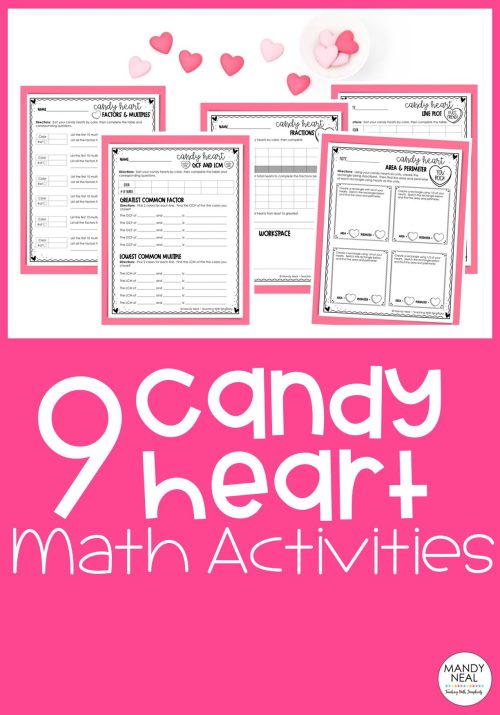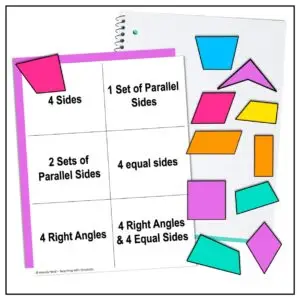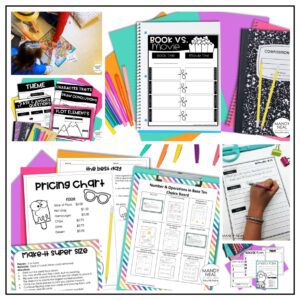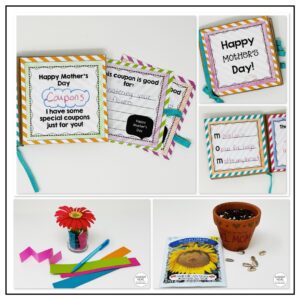Valentine’s Day is just around the corner, and it’s the perfect time to incorporate candy heart math activities into your math. Candy heart math activities are a great way to get your 3rd, 4th, and 5th-grade students interested in math and experimenting with numbers. With some preparation and creativity, you can turn a boring math lesson into a sweet, fun, and engaging experience.
Candy Heart Math and Factors and Multiples
Have students sort their candy hearts by color. Start by having them record how many of each color they have. Next, have them write the first five multiples using their number. After they find their multiples, they take the largest multiple and write its factors.
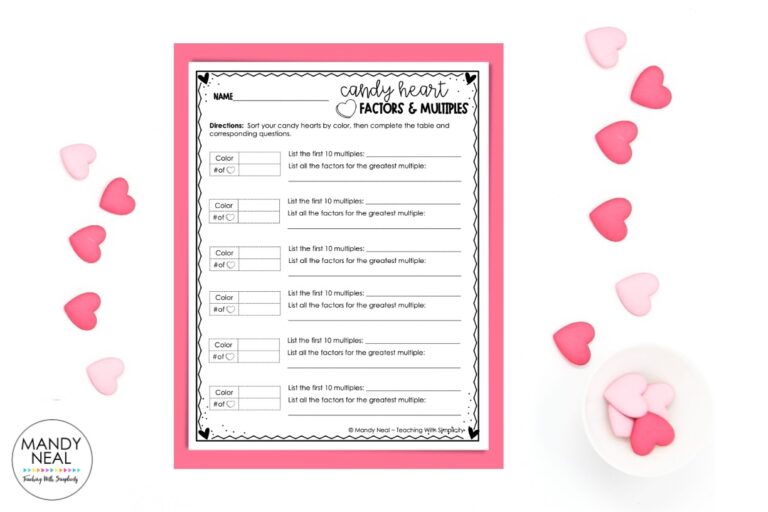
Candy Heart Math and Greatest Common Factor and Lowest Common Multiple
Students begin by sorting their candy hearts by color and listing the number of each color they have. This is a great activity to allow students to work with a partner. Each student picks a color and writes down the number they have. Then, together, they find the greatest common factor between their heart colors. Use the same process for finding the least common factor.
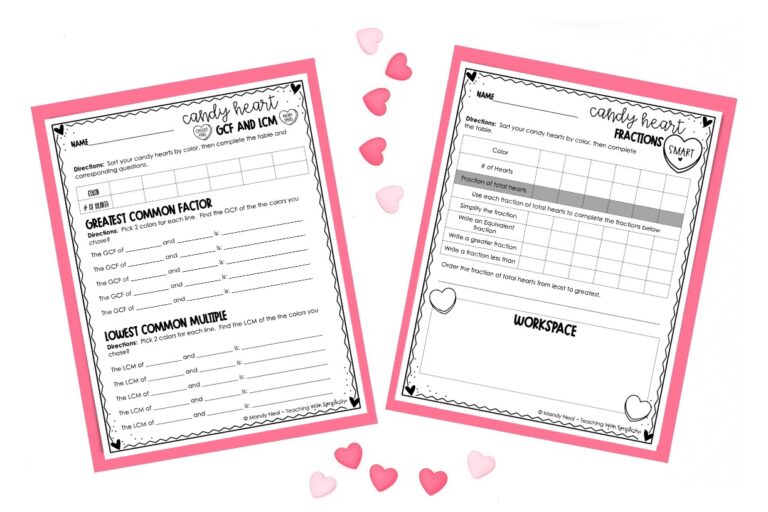
Candy Heart Math and Fractions
There are so many ways to use candy hearts while practicing fractions! Once again, students sort their hearts by color and list the number that they have. While there are many options, this one requires students to create a fraction based on the color and the total number of hearts. For example, if they have 6 purple hearts out of 30, the fraction they will work with is 6/30. Students can use this fraction to find an equivalent fraction, write a fraction greater and less than their fraction, and simplify their fraction.
Candy Heart Math and Graphing
Candy hearts can also be used for graphing activities. You can have your students sort the hearts by color and then create a bar graph, picture graph, pie chart, or line plot showing the number of each color. This activity can be done individually or in groups, and you can have them compare their results with other groups in the class. It’s a great way to introduce the basics of graphing, and it’s also an ideal activity for visual learners. To extend the activity further, have students write their own questions that can be answered using their graphs and have their classmates answer them.
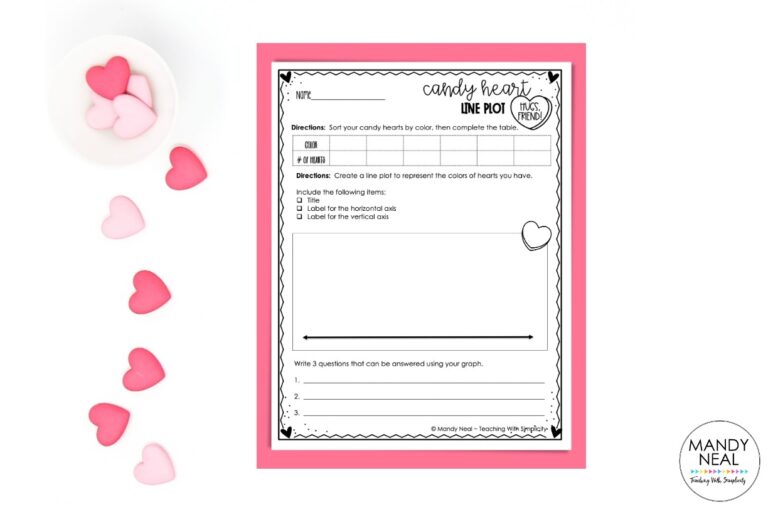
Candy Heart Math and Area and Perimeter
Students quickly get area and perimeter confused. So, what better way to review than with a fun, hands-on activity using candy hearts? Using candy hearts as units, have students create various rectangles. After they have made their rectangles, ask them to calculate the area and the perimeter of each using hearts as the units.
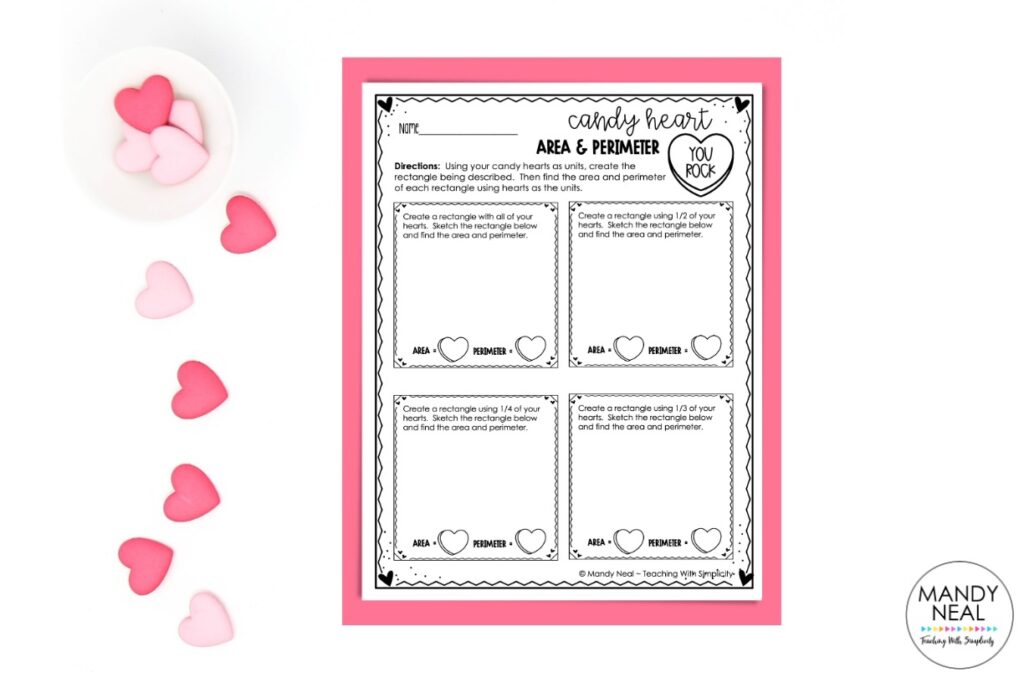
More Candy Heart Math Activities
Candy Heart Math and Probability
Probability is a fun math activity to start with. Have students calculate the probability of picking specific colors from a box of candy hearts. Start by asking them to estimate the number of each color, and then have them randomly pick a heart and record the color. After counting how many of each color they have, they can then calculate the probability. For example, if there are 20 pink hearts in the jar, and they picked five pink hearts, the probability would be 5/20 or 25%. Additionally, students can use this data to create a bar graph showing the probability of each color in the jar.
Candy Heart Math and Multiplication
Another activity you can do with candy hearts is multiplication. Give each student a certain number of candy hearts, and then have them group the candy hearts into equal groups. For example, if they have 24 candy hearts, they can group them into 3 groups of 8. They can write this as a multiplication problem (3×8=24) and practice multiplication using candy hearts. This is an excellent way to teach multiplication in a fun and interactive way.
Candy Heart Math and Estimation
Estimation is an essential math skill that students need to develop, and what better way to do it than with candy hearts? Estimation is all about making an educated guess based on limited information, making it a perfect activity for Math and Valentine’s Day. Have students place a handful of hearts in a cup or container and ask them to estimate how many candies there are. Encourage them to think about strategies like grouping or counting by fives or tens to determine their estimate. After that, reveal the actual count and ask students to compare their estimates with the real count.
Candy Heart Math and Mean, Median, and Mode
Candy hearts can also be used to teach the concepts of mean, median, and mode. Give each student a handful of candy hearts and have them calculate the mean (average), median (middle number), and mode (most common number) for each color. You can also have students compare the mean, median, and mode for different colors.
Candy heart math activities are an excellent way to make your math lessons more enjoyable during Valentine’s Day. Using these activities, students can practice probability, graphing, multiplication, estimation, and mean, median, and mode in fun and engaging ways. These activities can be adapted to fit various skill levels and incorporated into almost every area of math. I hope these ideas have inspired you to incorporate these sweet treats into your next Valentine’s math lessons!
SHOP THIS POST

Outrageously True ~ Martin Luther King Jr. Edition
